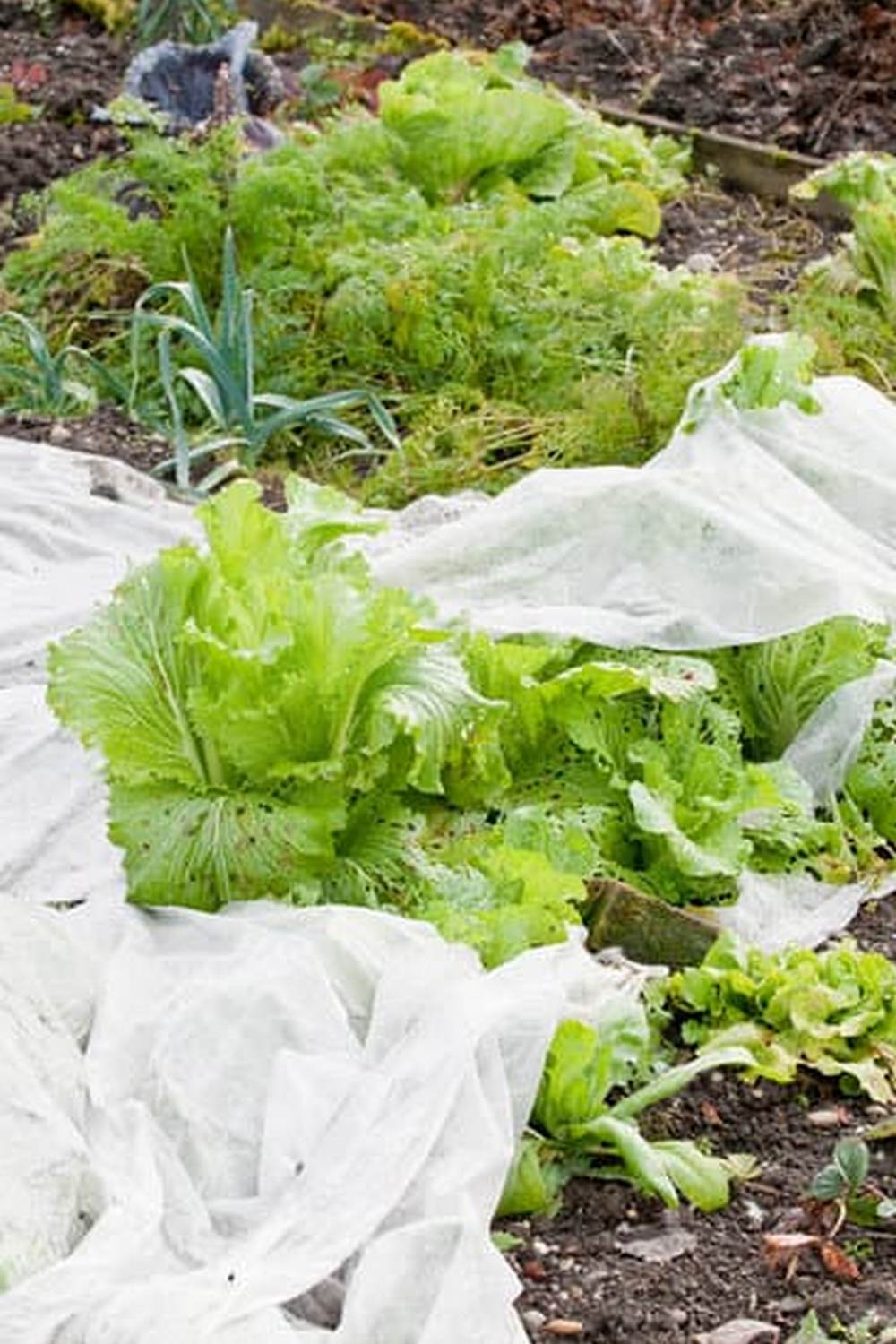Greenhouses provide a controlled environment that offers numerous advantages for growing vegetables, making it an excellent option for avid gardeners. With the ability to regulate temperature, sunlight exposure, and protection from external elements, greenhouses create the optimal conditions for vegetable cultivation. This controlled environment allows for year-round gardening, extending your growing season beyond traditional outdoor limitations.
In addition to providing a conducive environment for plant growth, greenhouses also offer protection against pests and diseases that commonly affect vegetable crops. By creating a barrier between your plants and the outside environment, you can effectively minimize the risk of infestations and infections, ensuring healthier produce. This added layer of security contributes to higher yields and better quality vegetables.
Furthermore, using a greenhouse enables you to have more control over the watering and fertilizing process, ensuring that your plants receive the precise nutrients they need for optimal growth. The ability to customize these crucial aspects of plant care in a greenhouse setting allows for increased efficiency and productivity in your vegetable garden. Overall, investing in a greenhouse for gardening vegetables is not only beneficial but also rewarding in terms of the quality and quantity of produce you can achieve.
Choosing the Right Location for Your Greenhouse
When setting up a greenhouse for gardening vegetables, one of the most crucial factors to consider is choosing the right location. The location of your greenhouse will significantly impact the amount of sunlight your plants receive and the temperature control inside the structure. Here are some key factors to consider when selecting the optimal location for your greenhouse:
- Sunlight: Choose a location that receives ample sunlight throughout the day, preferably with southern exposure to maximize sun exposure. Avoid placing the greenhouse in shaded areas or near tall buildings or trees that may block sunlight.
- Temperature Control: Consider the climate of your region and choose a location that allows you to regulate temperature effectively. Avoid areas prone to extreme temperature fluctuations or strong winds, as these can impact plant growth and health.
- Accessibility: Ensure easy access to utilities like water and electricity, as well as convenient access for maintenance and harvesting. Placing your greenhouse close to water sources can make watering tasks more manageable.
Furthermore, it’s essential to consider factors such as drainage, wind exposure, and proximity to other structures when selecting a location for your greenhouse. By carefully assessing these considerations, you can create an ideal environment for growing a variety of vegetables in your greenhouse throughout the year. A well-chosen location will contribute significantly to the success of your gardening venture in a controlled environment.
Selecting the Best Vegetables to Grow in a Greenhouse
When it comes to selecting the best vegetables to grow in a greenhouse, there are several options that thrive in controlled environments. These vegetables are well-suited for greenhouse gardening due to their adaptability to the consistent conditions provided by a greenhouse. Here are some of the top choices for your greenhouse:
- Tomatoes: Tomatoes are one of the most popular greenhouse-grown vegetables due to their high yield and ability to flourish in a controlled environment. With proper support and sufficient sunlight, tomatoes can thrive and produce delicious fruits.
- Cucumbers: Cucumbers also do well in greenhouses, as they require warm temperatures and plenty of moisture. By providing trellises or vertical support, cucumbers can grow vertically and save space in your greenhouse.
- Peppers: Bell peppers, chili peppers, and other pepper varieties are excellent candidates for greenhouse cultivation. Peppers enjoy warm temperatures and benefit from consistent conditions found inside a greenhouse.
Other vegetables that can thrive in a greenhouse include lettuce, spinach, herbs like basil and parsley, as well as microgreens. These vegetables not only appreciate the controlled environment of a greenhouse but also offer a variety of flavors and nutrients for your culinary adventures.
By choosing the right vegetables for your greenhouse, you can enjoy a bountiful harvest year-round while maximizing the benefits of your controlled growing space. Experiment with different vegetables to see which ones perform best in your specific greenhouse setup and take pleasure in nurturing these plants to maturity.
Designing and Setting Up Your Greenhouse
In terms of materials, there are several options to choose from when constructing a greenhouse for gardening vegetables. Common options include glass, polycarbonate, and polyethylene film. Glass provides excellent light transmission but can be heavy and costly.
Polycarbonate is durable and has good insulation properties, while polyethylene film is a more budget-friendly option that may need replacement over time. Additionally, consider incorporating features such as automatic ventilation systems or shade cloths to regulate temperature and humidity levels within the greenhouse.
Efficient use of space in your greenhouse is essential for maximizing vegetable production. Utilize vertical space by installing hanging baskets or trellises for climbing plants like cucumbers or beans. Implementing a tiered bench system can also help optimize space for planting trays or containers.
Proper organization of planting beds and pathways will not only enhance the aesthetic appeal of your greenhouse but also make maintenance tasks more manageable. By carefully planning the layout, selecting suitable materials, and making efficient use of available space, you can create a productive and functional greenhouse for gardening vegetables.
| Materials | Pros/Cons |
|---|---|
| Glass | Excellent light transmission but heavy and costly |
| Polycarbonate | Durable with good insulation properties |
| Polyethylene film | Budget-friendly option but may need replacement over time |
Climate Control in Your Greenhouse
When it comes to maintaining an optimal environment for gardening vegetables in a greenhouse, climate control plays a crucial role. Ventilation, heating, and cooling systems are essential components to ensure that your plants thrive in the controlled environment of a greenhouse. Proper ventilation helps regulate temperature and humidity levels, prevents the buildup of excess moisture, and allows for the exchange of fresh air.
Importance of Ventilation
Good airflow is key to preventing issues such as mold, mildew, and pests that thrive in stagnant conditions. Installing vents or fans can help circulate air throughout the greenhouse, ensuring that carbon dioxide is replenished for photosynthesis while excess heat is expelled during warmer months.
Heating and Cooling Systems
Maintaining consistent temperatures is essential for the successful growth of vegetables in a greenhouse. Heating systems such as heaters or heat mats can be useful during colder months to protect plants from frost damage. On the other hand, cooling systems like shade cloths or fans can help regulate temperature during hot summer days. It’s important to monitor and adjust these systems accordingly based on seasonal changes and specific vegetable requirements to create an ideal growing environment.
By implementing effective ventilation, heating, and cooling systems in your greenhouse for gardening vegetables, you can create a conducive environment that promotes healthy plant growth and high yields. Proper climate control not only ensures the success of your vegetable crops but also contributes to a more sustainable and efficient gardening experience within a controlled space like a greenhouse.
Watering and Fertilizing Your Vegetable Plants
Proper Watering Techniques
In a greenhouse for gardening vegetables, it is crucial to ensure that your plants receive adequate hydration to thrive and produce bountiful yields. One of the key strategies for proper watering is to establish a consistent schedule based on the specific needs of each vegetable variety.
Some plants may require more frequent watering, while others may prefer a drier environment. Additionally, using a drip irrigation system can help deliver water directly to the roots, promoting efficient absorption and reducing water waste.
Monitoring Soil Moisture Levels
To maintain optimal growing conditions in your greenhouse, regularly monitoring soil moisture levels is essential. Invest in a quality soil moisture meter to accurately assess when your vegetable plants require watering. Overwatering can lead to root rot and other issues, while underwatering can result in stunted growth and diminished harvests. By staying vigilant and adjusting your watering schedule as needed, you can help prevent moisture-related problems and ensure the health of your crops.
Fertilizing Guidelines
In addition to proper watering, providing appropriate nutrition is vital for the success of your vegetable plants in a greenhouse environment. Choose a well-balanced fertilizer specifically formulated for vegetables and follow the manufacturer’s instructions for application rates.
Be mindful not to over-fertilize, as this can lead to nutrient imbalances and harm your crops. Consider incorporating organic compost or manure into your soil mix for a natural source of nutrients that will enrich the growing medium and support healthy plant growth.
Pests and Diseases Management
Pests and diseases can pose a significant threat to the health and productivity of your vegetable crops grown in a greenhouse. Identifying common issues early on is crucial to implementing effective preventive measures and ensuring the success of your gardening endeavors. Some of the most common pests that can impact vegetables in a greenhouse setting include aphids, spider mites, whiteflies, and caterpillars. These pests can quickly multiply and cause damage to your plants if left unchecked.
One way to manage pest infestations in your greenhouse is through regular monitoring. Check your plants frequently for any signs of pest activity such as yellowing leaves, distorted growth, or the presence of insects. By catching potential issues early, you can take action promptly before the problem escalates. Introducing beneficial insects like ladybugs or lacewings can also help control pest populations naturally without the use of harmful chemicals.
In addition to pests, diseases can also affect vegetable crops in a greenhouse environment. Common plant diseases such as powdery mildew, damping-off, and leaf spot can spread rapidly if not addressed proactively. To prevent disease outbreaks, practice good sanitation by removing any infected plant material immediately and maintaining proper air circulation within your greenhouse.
Implementing a regular watering schedule that avoids wetting the foliage can also reduce the risk of fungal diseases taking hold. By staying vigilant and following preventive measures, you can effectively manage pests and diseases in your greenhouse for optimal vegetable growth.
| Pests | Diseases |
|---|---|
| Aphids | Powdery Mildew |
| Spider Mites | Damping-off |
| Whiteflies | Leaf Spot |
Harvesting and Storage
In conclusion, utilizing a greenhouse for gardening vegetables offers a myriad of benefits that can enhance the quality and yield of your crops. By providing a controlled environment, you can optimize temperature, sunlight exposure, and moisture levels to create an ideal growing conditions for a variety of vegetables. This allows you to extend your growing season, protect your plants from adverse weather conditions, and ultimately increase your harvest.
When it comes to harvesting and storage, proper techniques are essential to maintain the freshness and quality of your vegetables. Harvesting at peak ripeness ensures maximum flavor and nutritional value in your produce. Additionally, storing your vegetables post-harvest in the right conditions can prolong their shelf life and reduce wastage. Properly ventilated storage areas with controlled humidity levels can help prevent spoilage and preserve the freshness of your crops.
In summary, by following guidelines for harvesting vegetables at peak ripeness and employing proper storage methods post-havest within your greenhouse setup, you can enjoy a bountiful harvest of fresh and delicious vegetables year-round.
Remember to pay attention to each step in the process – from selecting the right location for your greenhouse to implementing climate control measures, watering techniques, pest management strategies, all the way through to perfecting harvesting practices – in order to make the most out of your greenhouse for gardening vegetables.
Frequently Asked Questions
What Vegetables Grow Best in a Greenhouse?
Certain vegetables thrive in a greenhouse environment due to the controlled conditions they provide. Tomatoes, cucumbers, peppers, and leafy greens like lettuce and spinach are popular choices for greenhouse cultivation.
Can You Grow a Full Garden in a Greenhouse?
It is indeed possible to grow a full garden in a greenhouse, depending on its size and design. While some large plants like trees may not be suitable for greenhouse growing, a variety of fruits, vegetables, herbs, and flowers can flourish inside.
What Not to Put in a Greenhouse?
Not all plants are well-suited for greenhouse cultivation. Plants that require large amounts of space, like corn or pumpkins, may not be ideal for greenhouse growing due to their size. Additionally, plants that are prone to pests and diseases may not benefit from the enclosed environment of a greenhouse.

If you’re looking to get into vegetable gardening, or are just looking for some tips on how to make your current garden better, then you’ve come to the right place! My name is Ethel and I have been gardening for years. In this blog, I’m going to share with you some of my best tips on how to create a successful vegetable garden.





